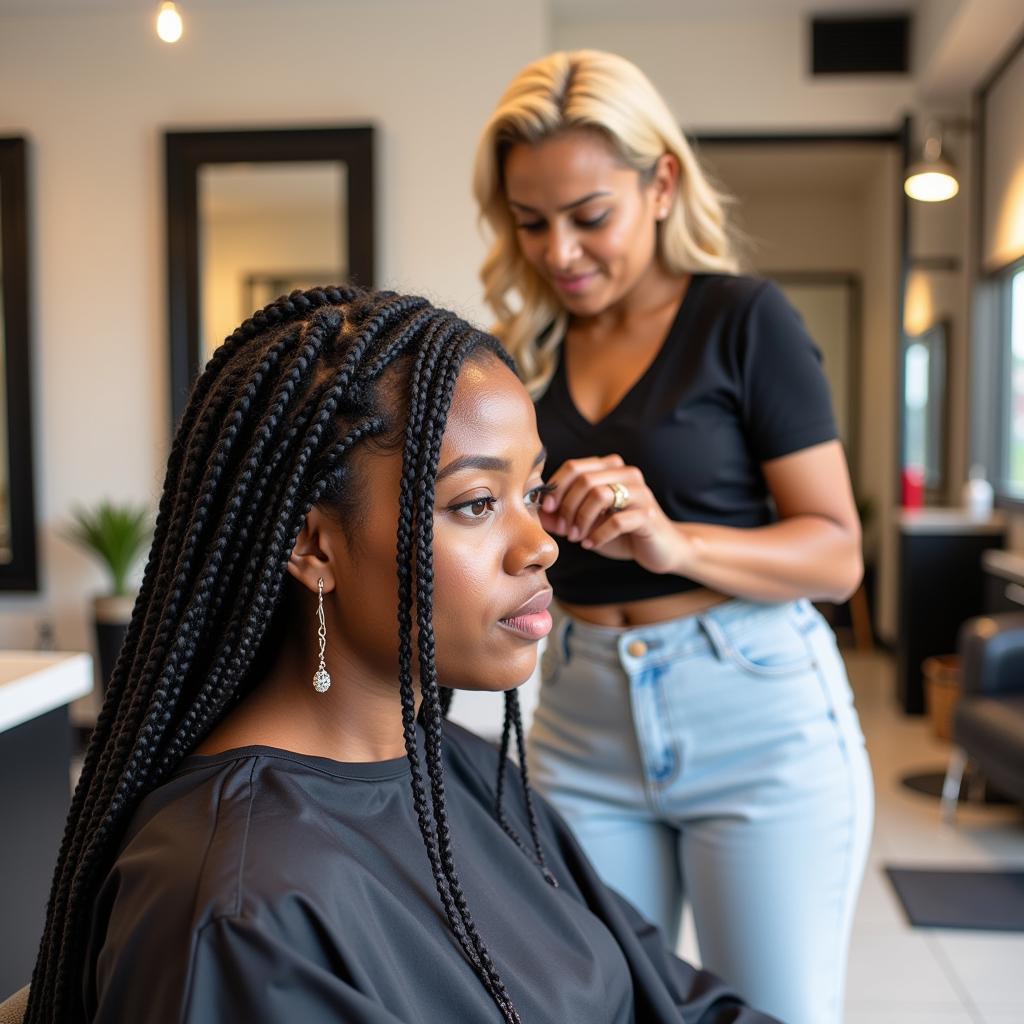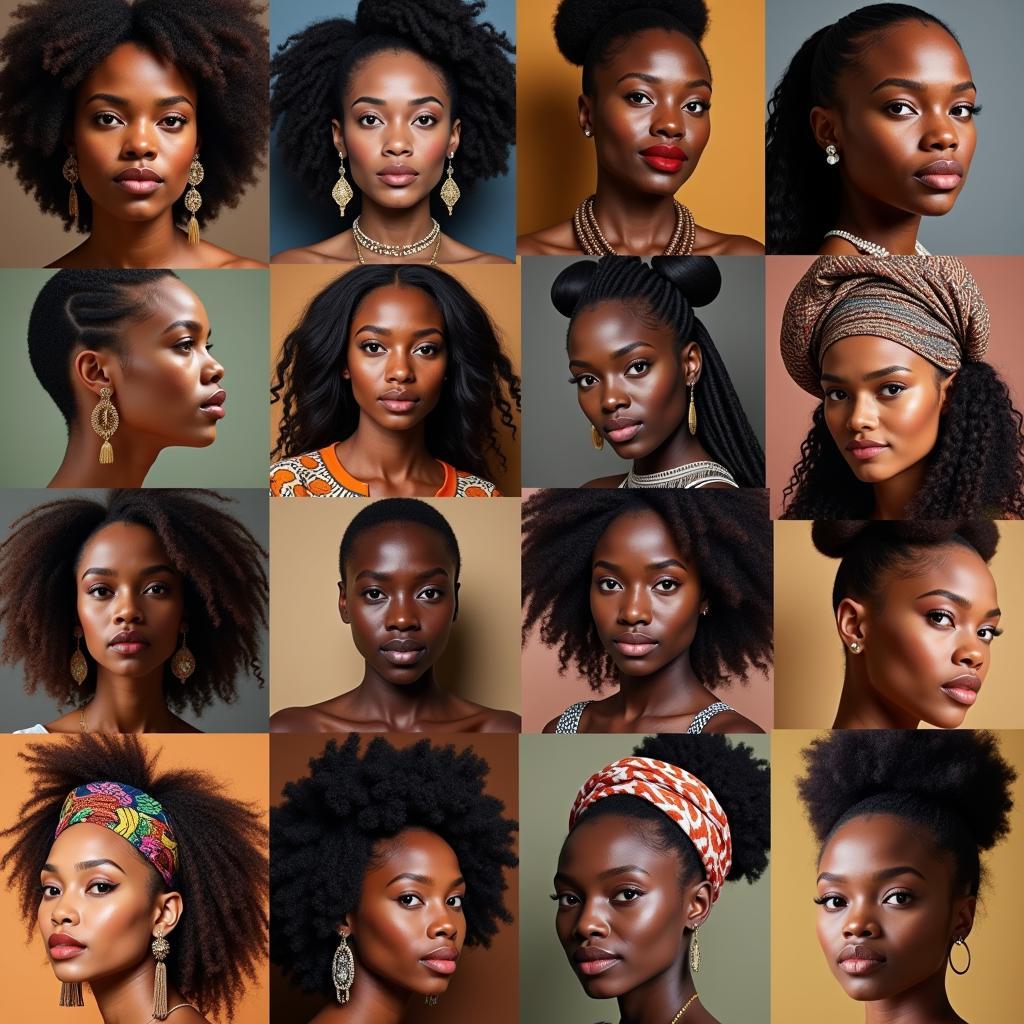African Figure Painting in 3 Boxes: Unpacking Artistic Narratives
African figure painting, a vibrant and diverse art form, encapsulates the spirit, traditions, and stories of the continent. Whether contained within the metaphorical “3 boxes” of cultural context, artistic style, or individual interpretation, these paintings offer a window into the rich tapestry of African life. Exploring these “boxes” reveals the depth and complexity of African figure painting, moving beyond mere aesthetics to unravel the narratives woven within each brushstroke.
Decoding the Cultural Context of African Figure Painting
The first “box” we’ll unpack is the crucial cultural context surrounding African figure painting. These aren’t just pictures; they are visual narratives deeply embedded in the beliefs, rituals, and social structures of various African communities. Understanding the specific culture from which a painting originates is vital to interpreting its meaning. For instance, Yoruba art from Nigeria often features elongated figures and intricate patterns symbolizing spiritual power and connection to the Orishas. Similarly, the bold geometric designs in Ndebele art reflect a strong sense of cultural identity and female empowerment. Appreciating these nuances allows us to move beyond a superficial understanding and engage with the deeper significance embedded within the artwork.
The role of the artist within the community also plays a crucial role. In many traditional societies, artists held a special status, often serving as storytellers, historians, and spiritual intermediaries. Their work wasn’t simply decorative; it played an active role in communal life, reinforcing cultural values, commemorating historical events, and facilitating communication with the spiritual realm.
Exploring the Diversity of Artistic Styles in African Figure Painting
Our second “box” focuses on the diverse artistic styles present in African figure painting. While common themes and motifs may exist, each region and ethnic group has developed unique aesthetic approaches. From the highly stylized forms of Makonde sculpture to the dynamic compositions of Tingatinga painting, African art showcases a breathtaking range of techniques and visual languages. The materials used, ranging from natural pigments and plant dyes to recycled materials and acrylic paints, further contribute to the diversity of artistic expression.
Consider the contrasting styles of Ethiopian religious iconography, with its characteristically large eyes and serene expressions, and the vibrant, almost cartoonish figures found in contemporary South African township art. These diverse styles reflect not only different aesthetic preferences but also evolving social and political contexts, demonstrating the dynamic nature of African art.
Unveiling Individual Narratives within African Figure Painting
Finally, our third “box” invites us to delve into the individual narratives embedded within each painting. While cultural context and artistic style provide a framework for understanding, each artwork also tells a unique story – the artist’s personal vision, their interpretation of the world, and their response to the specific context in which they create.
Think of the powerful social commentaries expressed in the works of artists like Chéri Samba from the Democratic Republic of Congo. His paintings, often incorporating text and bold imagery, directly address political and social issues, giving voice to the marginalized and challenging established narratives. Similarly, the intricate details and symbolism found in many traditional masks and sculptures can reveal individual stories of ancestry, heroism, or spiritual transformation.
By recognizing the individual narratives within African figure painting, we move beyond a generalized understanding and engage with the artwork on a more personal and profound level, appreciating the unique voice and perspective of each artist.
Conclusion
African figure painting, viewed through the lens of cultural context, artistic style, and individual narratives, offers a rich and multifaceted understanding of African Life and culture. Exploring these “3 boxes” allows us to appreciate the depth and complexity of this art form, recognizing it not simply as decoration but as a powerful means of storytelling, cultural preservation, and social commentary. By engaging with these narratives, we gain a deeper appreciation for the vibrant tapestry of African artistic expression.
FAQ
- What are some common themes in African figure painting?
- How does African figure painting reflect spiritual beliefs?
- What are the different types of materials used in African figure painting?
- How can I identify the different styles of African figure painting?
- Who are some notable contemporary African figure painters?
- Where can I find authentic African figure paintings?
- How is African figure painting used in storytelling?
Need support? Contact us 24/7: Phone: +255768904061, Email: kaka.mag@gmail.com Or visit us: Mbarali DC Mawindi, Kangaga, Tanzania.

